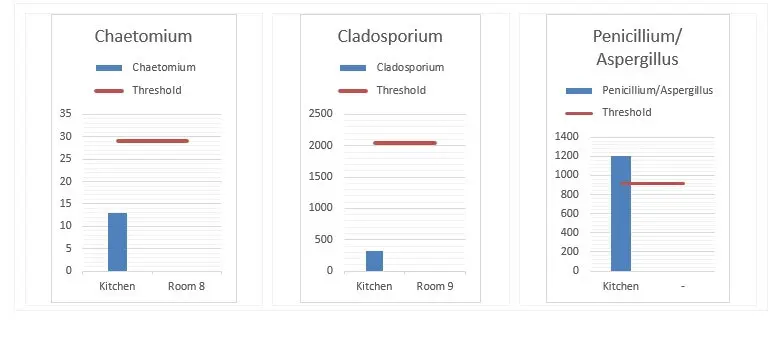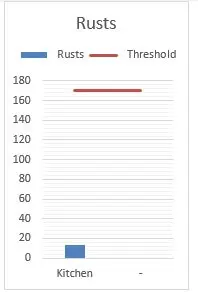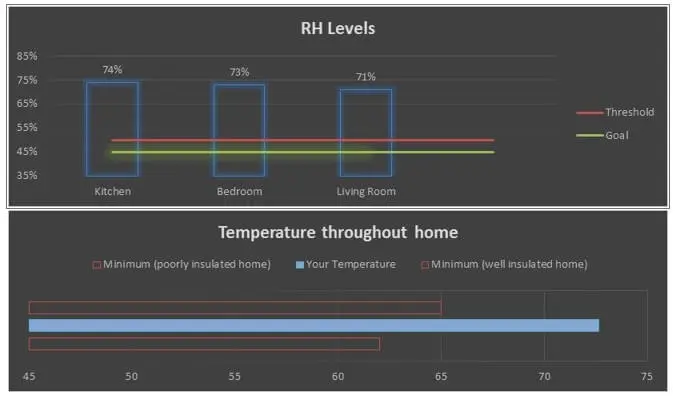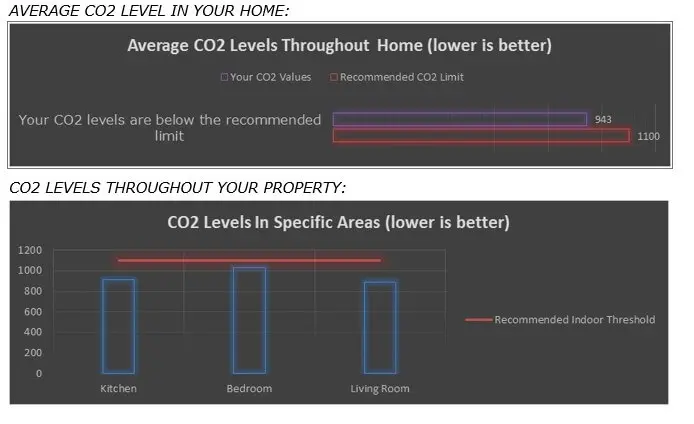Mold Inspection Reports from Gig Harbor
Below are recent mold inspection projects we’ve completed in the Gig Harbor area. These reports can help provide you with an idea of the issues we typically encounter in your region.
Project Type > Whole House Inspection for Mold in Gig Harbor
PROJECT SUMMARY
REASON FOR INSPECTION:
- Clients tenant has been sick off and on lately and is concerned about mold in the property. Environix hired to inspect the property and take one indoor air quality sample.
PROPERTY DESCRIPTION:
- This single family residential property is 675 ft².
CAUSE OF MOLD:
- No visual mold growth noted in property. Elevated mold spore count could be due to unsealed attic at the pantry door or crawl space contamination when the forced air system is running.
LABORATORY RESULTS
ANALYSIS OF YOUR RESULTS:
- Minor Amplification: Mold spores were detected at or near the threshold. This indicates a possible site of mold amplification. Further testing and/or comparison with the results of a visual inspection are necessary to determine the likelihood of indoor amplification.
- The most likely contributor of the elevated mold spores is:
- Elevated humidity.
- Prior water intrusion.
Recommendations:
- Although your indoor mold spore count is slightly elevated, the levels are not high enough to warrant professional remediation. By following the recommendations listed in the report and implementing regular cleaning, the mold spore levels should return to normal.
JOBSITE PHOTOS
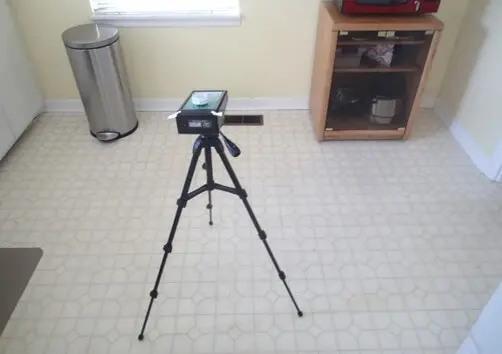
Area of air sample.
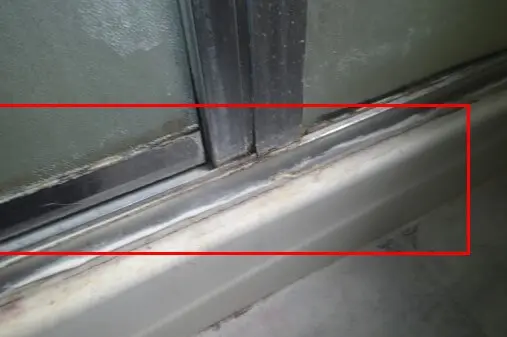
Mold growth on and in the bathroom is consistent with high humidity and moisture with a lack of ventilation.
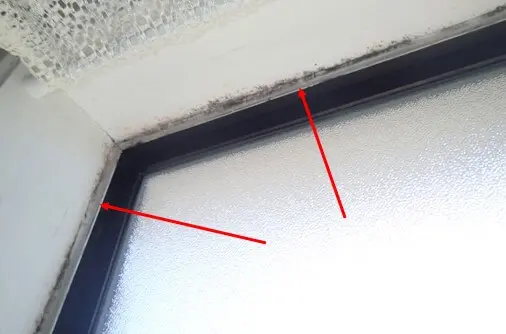
Condensation based mold growth on metallic windows in the property.
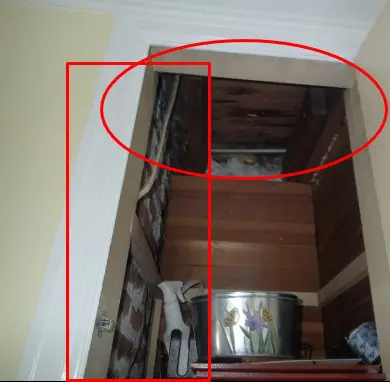
Large void to attic in pantry may be causing unconditioned air to move into the interior of the home. By running a bathroom fan in the home you may be negatively pressurizing the home and drawing attic air into the interior of the property. Highly consider closing this closet off and sealing all sides from attic and chimney.
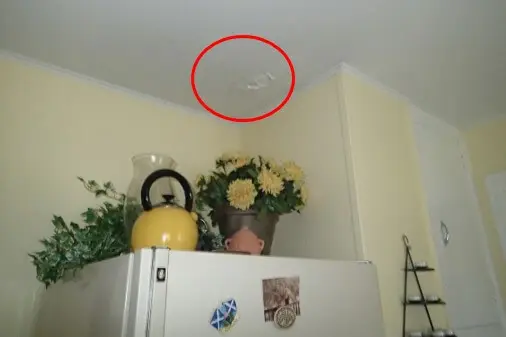
Two areas of water damage by roof leaks. Roof is scheduled for more extensive repairs to fix water issues.
RELATIVE HUMIDITY & TEMPERATURE READINGS:
CO2 READINGS:
VENTILATION:
OBSERVATIONS:
- Relative humidity levels are elevated. Generally, indoor RH levels should remain under 55% or under 50% in homes with poorly insulated exterior walls. NOTE: During the warmer months (June through September), the indoor RH levels may be elevated due to high RH levels in the outside air. Therefore, care should be taken when drawing conclusions from elevated RH levels during these months.
- CO2 levels are near the threshold in the bedroom. While not a direct health problem, elevated CO2 levels are an indication of stale indoor air and poor ventilation. This can lead to a buildup of pollutants and humidity, which can cause mold growth. Following the ventilation recommendations listed below will lower the CO2 levels in the home.
- Home suffers from insufficient ventilation. This leads to a buildup of indoor pollutants and increases the relative humidity, creating conditions conducive to mold growth and dust mites.
LOCATION: Hall Bathroom
OBSERVATIONS:
- Light condensation-based mold growth observed on the bathroom window.
CEILING:
- Light mold growth noted on bathroom ceiling. This occurs when the warm, moist air generated by shower usage interacts with the cool surface of the ceiling. Without adequate ventilation, this causes condensation and subsequent mold growth.
SHOWER:
- Several small areas of failed caulking in shower. This can lead to water infiltration and mold growth/wood rot in the wallboard and framing behind the shower surround. However, because the potential mold growth would occur within the wall cavity, the issue has no effect on the indoor air quality.
Recommendations:
- See ventilation section above for recommendations to eliminate condensation and lower the relative humidity in the home.
- Re-caulk the shower surround.
LOCATION: Bedroom
OBSERVATIONS:
- The bedroom is furnished with carpeting in clean condition, installed over a wood subfloor.
- The bedroom is equipped with a metal framed double paned window with evidence of light condensation and light mold growth problems.
- A thorough inspection of this room revealed the room to be clear of any issues with elevated moisture or water damage.
LOCATION: Laundry Room
OBSERVATIONS:
- The laundry room is equipped with a metal framed double paned window with no evidence of any condensation or mold problems.
- Evidence of a prior roof leak was noted in this room, as the ceiling shows evidence of water damage. The prior roof leak has rotted the ceiling in one area.
- Further inspection of the room revealed no issues with mold growth or elevated moisture in the building materials.
Recommendations:
- Consider replacing the damaged ceiling materials in this room. Patch and paint to match the surrounding surfaces.
LOCATION: Kitchen
OBSERVATIONS:
- The kitchen is equipped with metal framed double paned windows with evidence of light condensation and light mold growth.
- The kitchen is equipped with a wood door with a single paned window in it with evidence of light condensation and mold growth.
- Evidence of a prior roof leak was noted in this room, as the ceiling shows evidence of water damage above the refrigerator.
- One of the kitchen pantries has no ceiling. Attic insulation is visible in this area.
Recommendations:
- Install a ceiling in the pantry.
- Use spray foam to seal the gaps in the pantry.


